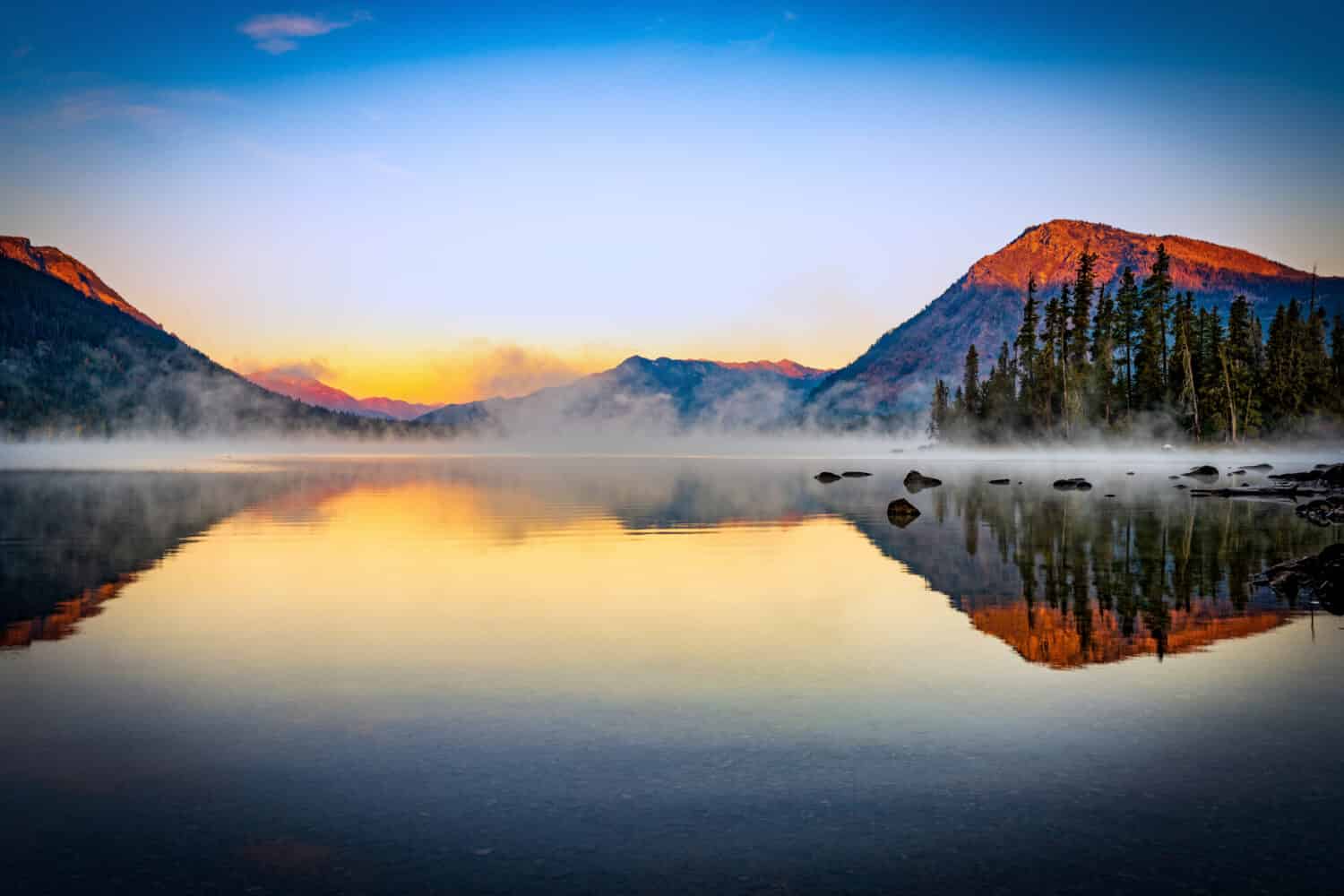Lake Wenatchee is a beautiful lake in the Cascade Mountains of Washington. This fantastic lake features stunning mountain views, great fishing, and fun hiking trails. Lake Wenatchee gets its name from the P’Squosa people, who were called Wenatchi by the neighboring Yakama people. Wenatchi means “the people in between.” P’Squosa/Wenatchi people are indigenous to the area around the Wenatchee River and the present-day town of Wenatchee, WA. This article covers everything you need to know about Lake Wenatchee, including its location, history, size, and depth. It also explores fishing, boating, camping, and other activities. Let’s explore what makes Lake Wenatchee special!

Lake Wenatchee is surrounded by the Okanogan-Wenatchee National Forest.
©CHARLES MORRA/Shutterstock.com
Location
Lake Wenatchee is in Chelan County, WA. It is located in the Okanogan-Wenatchee National Forest, a 1,735,394-acre forest in the Cascade Mountains. The lake is about 110 miles east of Seattle, WA. It is 45 miles northwest of Wenatchee, WA. Lake Wenatchee lies up at 1,873 feet elevation. It is the source of the mighty Wenatchee River, which runs southeast from the lake to its mouth at the Columbia River, just north of Wenatchee, WA. The tributaries of Lake Wenatchee are the White River and the Little Wenatchee River.
History
Lake Wenatchee is on the ancestral lands of the P’Squosa/Wenatchi people, who mainly lived along the Wenatchee River. Unfortunately, not much information about these people survives to this day, and they are not a federally or state-recognized tribe. What is known about the P’Squosa people is that like many indigenous peoples of the Pacific Northwest, they ate a diet of salmon from the river and foraged plant foods. Many surviving P’Squosa/Wenatchi people live on the Yakama Indian Reservation or the Colville Reservation.
The first fur traders to visit Chelan County arrived in 1811. Settlers began establishing themselves in the area in the late 19th century. These early settlers began to create agriculture and logging industries in the area. In order to make the surrounding land fit for agriculture, the new arrivals cut down the old-growth forest which had previously covered the area. In the 19th century, the development of the Northern Pacific and Great Northern railroads transformed the area into a booming hub for logging and agriculture.
The Okanogan-Wenatchee National Forest was established in 1908.
Size
Lake Wenatchee has an area of 2,480 acres (3.86 square miles). Its maximum length is five miles.
How does Lake Wenatchee compare in size to other notable lakes? Lake Tahoe, in the Sierra Nevada Mountains of California and Nevada, has an area of 122,160,280 acres. That means the surface area of Lake Wenatchee could fit into the surface area of Lake Tahoe 49,258 times! Another notable lake is Lake Superior, which has the largest surface area of any freshwater lake in the world. The surface area of Lake Superior is 20,364,800 acres. That’s 8,212 times larger than Lake Wenatchee!
How does Lake Wenatchee compare to other lakes in Washington? Lake Chelan of Chelan County and Lake Washington of King County are the largest lakes in Washington by area. Lake Chelan has a surface area of 33,344 acres. That’s 13.5 times larger than Lake Wenatchee. Lake Washington has a surface area of 21,632 acres, which is almost 9 times larger than Lake Wenatchee.
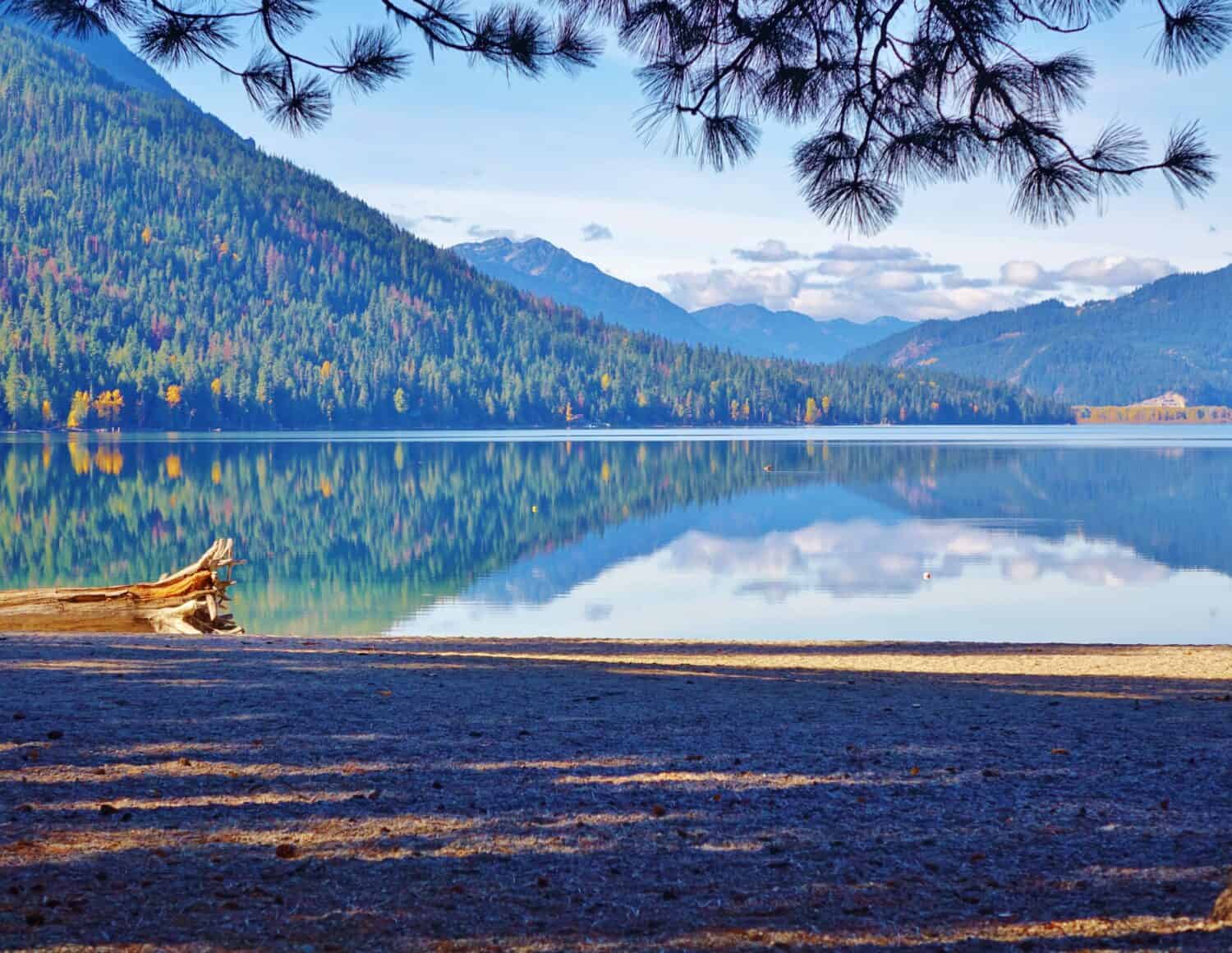
Lake Wenatchee is an oblong shape, stretching from northwest to southeast.
©Dan Lewis/Shutterstock.com
Depth
Lake Wenatchee has a maximum depth of 244 feet. However, the lake has a much shallower lagoon on the south end, in Lake Wenatchee State Park. This shallow area is popular for children and swimmers.
Water Level
The water level of Lake Wenatchee, meaning the height of the lake’s surface, varies throughout the year depending on many factors. Some of the main factors that impact Lake Wenatchee’s water level are rain, snowmelt runoff, and evaporation. Lake Wenatchee’s water level tends to be higher when snow is melting in spring, and lower during late summer as the snowmelt runoff slows and evaporation increases.
A water level gauge sits at the boat launch in Lake Wenatchee State Park. Rangers track the water level using this gauge. The water level fluctuates over the year from a high of 6 feet to a low of less than 6 inches.
Fishing
Lake Wenatchee is a fantastic lake for fishing. There is plenty of available shoreline to fish from, and visitors can also fish from boats. Anglers can access great shorelines in both the state park and national forest. The Washington Department of Fish and Wildlife (WDFW) manages fishing in the lake. According to the WDFW, fishing with two poles is allowed on the lake.
Below are some of the main species available for fishing in the lake. Only one fish in the lake is protected, which is the bull trout. If an angler accidentally catches a bull trout, they must release it.
Sockeye Salmon (Oncorhynchus nerka)
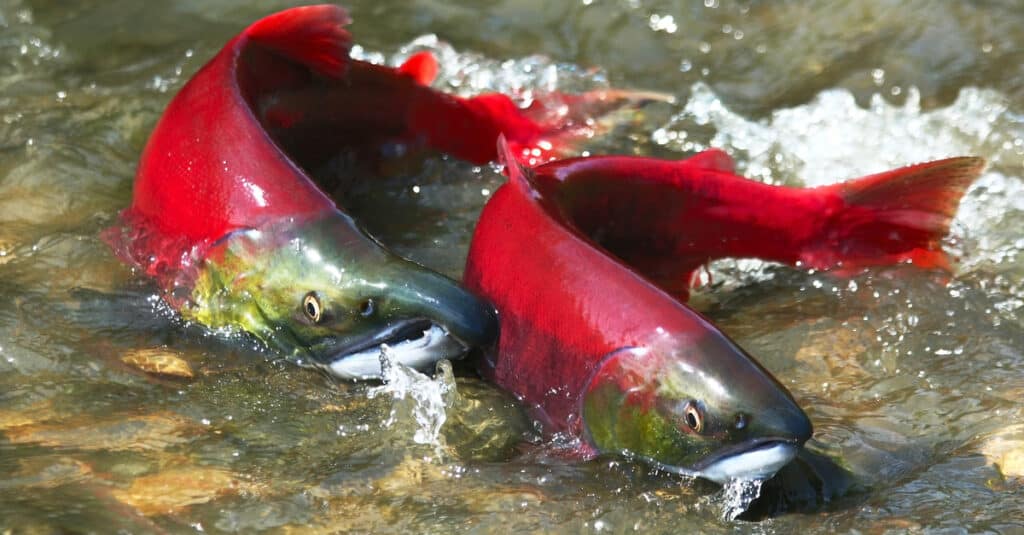
Sockeye salmon turn bright red during the spawning season.
©Vasik Olga/Shutterstock.com
The sockeye salmon is the main fishing species in Lake Wenatchee. The WDFW works to maintain an abundance of sockeye salmon in the lake for anglers. Sockeye salmon fishing is best in May through September.
Rainbow Trout (Oncorhynchus mykiss)
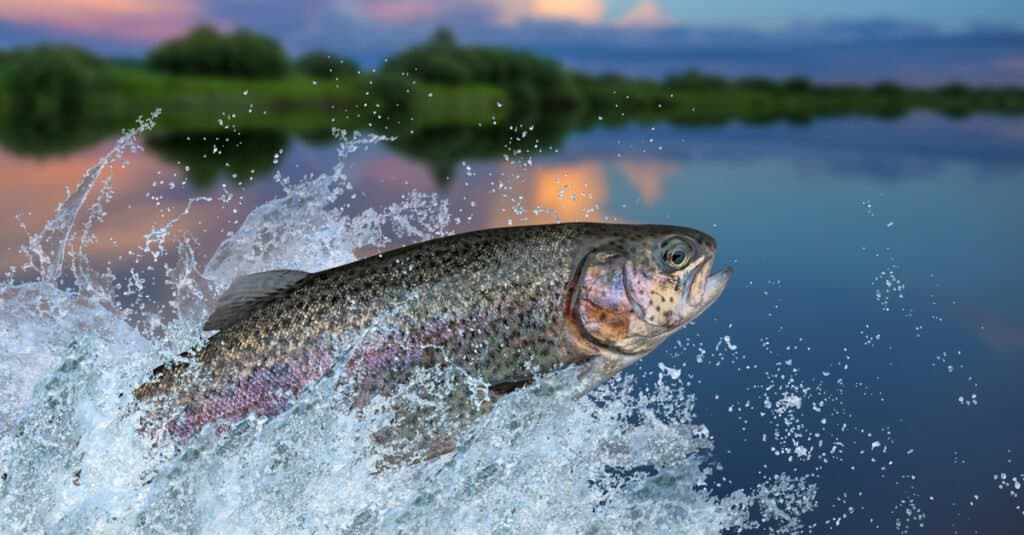
Rainbow trout are commonly found throughout the United States.
©FedBul/Shutterstock.com
WDFW stocks rainbow trout in lakes all around Washington every spring. Rainbow trout is most abundant in the spring and early summer. Once the water warms in summer, they move offshore to stay cool. When the water cools back down in the fall, they return to the shore. Additionally, the WDFW often restocks rainbow trout at the lake in the fall.
Westslope Cutthroat Trout (Oncorhynchus clarkii lewisi)
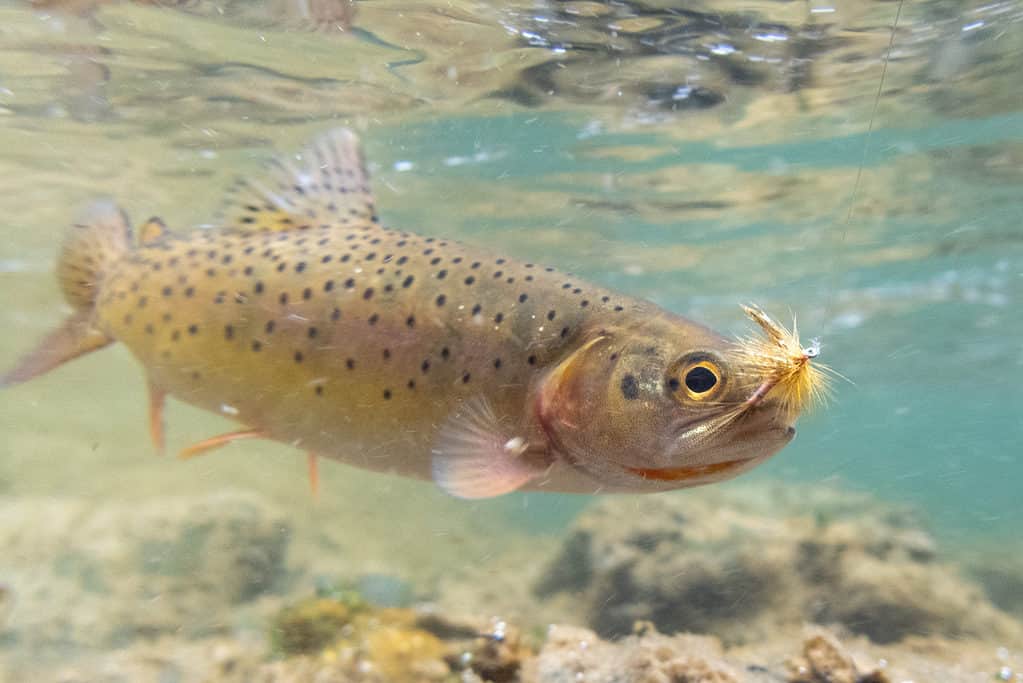
Westslope cutthroat trout is a subspecies of cutthroat trout.
©iStock.com/christiannafzger
The westslope cutthroat trout is also most available in spring and fall. Anglers have the best chances of catching one in April, May, or June. Then, they have a good chance again in September and October.
Northern Pikeminnow (Ptychocheilus oregonensis)
The northern pikeminnow is most abundant when the water is warm. Anglers have the most success with this species in May and June. Like many other species, they retreat to cooler water during the hottest part of the summer. However, they return to the shore again in September and October.
Geology
Lake Wenatchee formed in the Cascade Mountains as the most recent glaciation period (ice age) receded. Let’s explore how the Cascade Mountains formed.
The Cascade Mountains formed when the Juan De Fuca plate moved east from the Pacific Ocean and subducted (went underneath) the North American plate. This subduction created an uplift that became the mountains. Additionally, the part of the Juan De Fuca plate that went underneath the North American plate was exposed to high heat under the earth’s surface, causing it to melt and create the volcanoes of the Cascades. Finally, the Cascade Mountains were shaped by glaciers during glaciation periods. It is due to these glaciers that the Cascade Mountains are so rugged and steep with deep valleys.
As the most recent glaciation period receded, large amounts of water were left in the deep valleys of the Cascade Mountains, creating many lakes. This is how Lake Wenatchee was formed.
Boating and Other Activities
There is so much to do at Lake Wenatchee. Let’s explore the boating, swimming, and hiking opportunities at the lake!
Boating
Lake Wenatchee has one boat launch. It is located on the south end of the lake in Lake Wenatchee State Park. The dock is 16 feet. In order to use the dock, visitors need either a natural investment permit, an annual Discover Pass and daily launch permit, or a single day Discover Pass and daily launch permit. There are also boats available for rent on the lake.
In addition to motorized boats, visitors can also enjoy paddling on the lake. Both kayaks and canoes are a great option for people looking to paddle Lake Wenatchee.
Swimming
Visitors can swim anywhere in the lake. However, the safest place to swim is in the designated swimming area in Lake Wenatchee State Park on the south end of the lake. The designated swimming area is in a shallow lagoon, making it a great option for children and families.
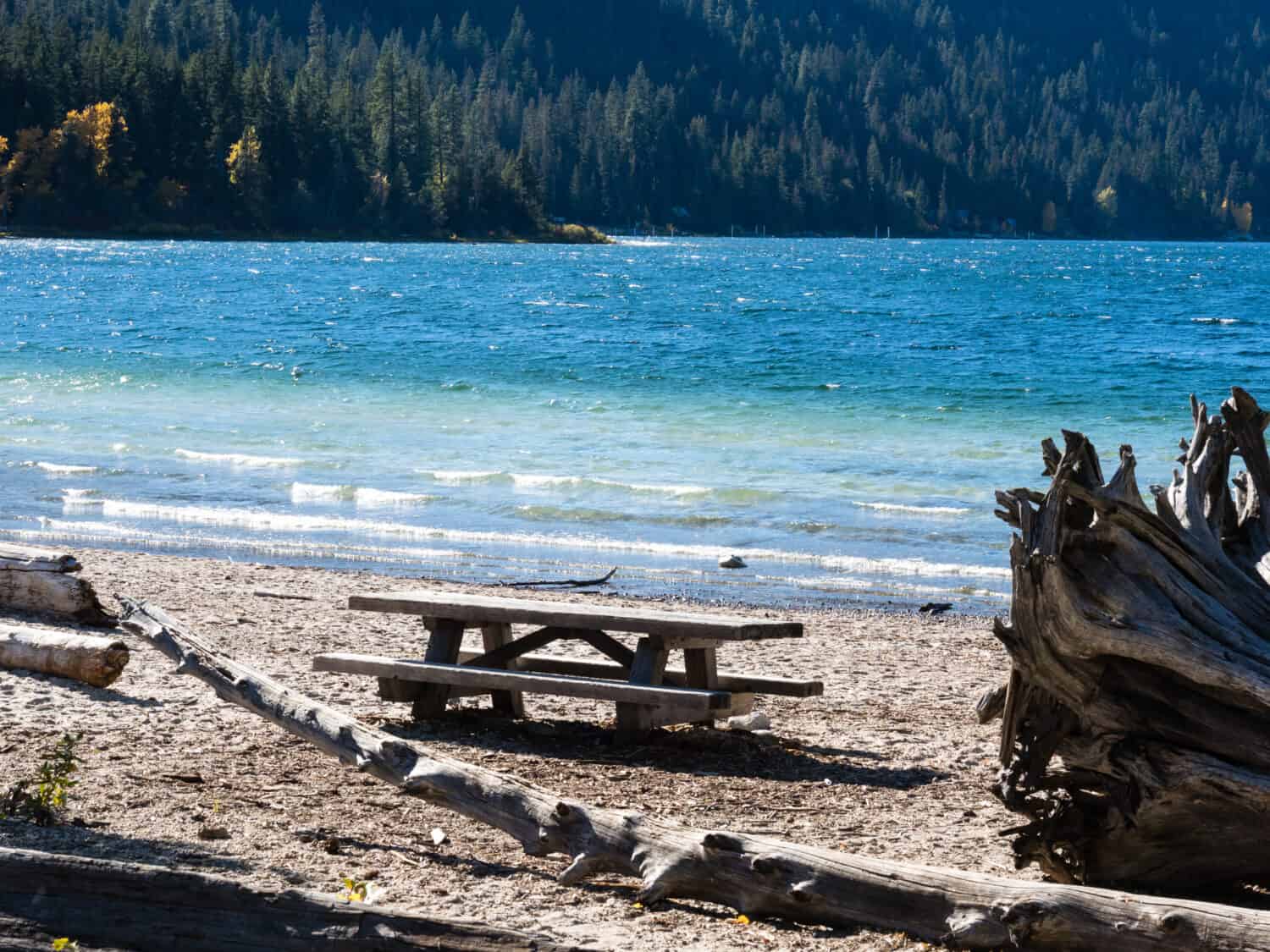
Lake Wenatchee is a beautiful place to swim, with views of the surrounding Cascade Mountains.
©Amehime/Shutterstock.com
Hiking
There are many beautiful trails to enjoy around Lake Wenatchee. The lake features eight miles of hiking trails, seven miles of biking trails, and five miles of horse trails.
The two hiking trails within Lake Wenatchee State Park are the North Park and South Park Trails. North Park Trail is a two-mile loop trail that takes hikers from the day-use parking area to the beautiful North Beach area. South Park Trail is a 1.8-mile out-and-back trail that begins at the boat launch. The trail follows the Wenatchee River to its confluence with Nason Creek.
Additionally, the Okanogan-Wenatchee National Forest offers hiking opportunities at Lake Wenatchee. Hidden Lake Trail and Dirty Face Lookout Trail both begin at Lake Wenatchee. Hidden Lake Trail is a 9-mile round trip out-and-back trail that has 2,900 feet of elevation gain. The trail is considered moderately strenuous. At the top, hikers will find a historic fire lookout building. Dirty Face Lookout Trail is also a 9-mile round trip out-and-back trail. It has 3,950 feet of elevation gain. This trail is considered difficult. At the top are incredible views of the Cascade Mountains, including Glacier Peak.
Winter Activities
The lake offers cross-country skiing, sledding, and snowshoeing during the winter months. Visitors can snowshoe both the North Park and South Park trails in Lake Wenatchee State Park.
Lake Wenatchee State Park
Lake Wenatchee State Park is located on the south end of the lake and provides many recreation opportunities. The boat launch and designated swimming area are both in the state park. The state park also has picnic areas and an amphitheater. Camping is also available at Lake Wenatchee State Park.
Okanogan-Wenatchee National Forest
The Okanogan-Wenatchee National Forest surrounds Lake Wenatchee. It is a massive 3.8-million-acre forest on the east slopes of the Cascade Mountains. The National Forest offers many hiking and camping opportunities.
Camping
Lake Wenatchee has an abundance of campsites in both the state park and national forest. The best season for camping at the lake is summer.
Lake Wenatchee State Park has 155 standard campsites and 42 partial hookup sites. Two campsites in the state park are ADA-accessible. There are seven restrooms, 16 showers, and one dump station. The state park has two campgrounds, north and south. The south campground has sites 1-100, which have 30-40-foot-long parking pads. Sites 101-197 are in the north campground, which has the park’s 42 pull-through RV spots. As for tents, the park allows one large family tent or two 2-3 person tents per site. Two cars are allowed per campsite. Lastly, the state park has one large group campsite that fits 20-80 people.
Camping is also available in the Okanogan-Wenatchee National Forest at Glacier View Campground. Glacier View Campground features 23 standard campsites, 16 of which are walk-in sites on the lake’s shore. There are no ADA-accessible sites at Glacier View Campground. There are four vault toilets and no showers at the campground. At Glacier View Campground, visitors can enjoy the serene waters of the lake’s south shore, perfect for paddling.
Where Is Lake Wenatchee Located on a Map?
Thank you for reading! Have some feedback for us? Contact the AZ Animals editorial team.

